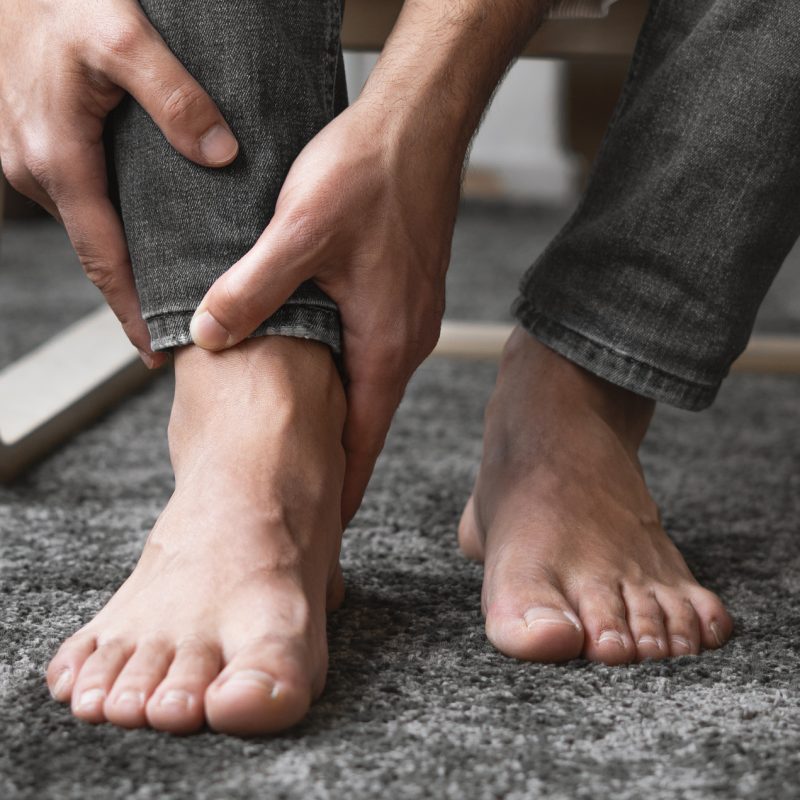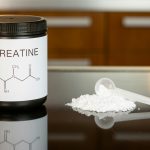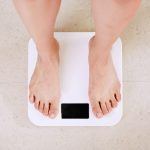
Most of us come into this world with two perfectly healthy feet. We count on these feet to support our bodies through every transition, from standing still to running, dancing, skipping, playing sports, and taking those all-important 10,000 steps each day. With proper care and attention, we can maintain healthy foot anatomy and function for our entire lives; however, this does require some work. In this article, we explore what constitutes a healthy foot, how we can care for our feet (including proper shoes), what to look for in terms of visible problems, and what the feet can reveal about our overall health.
The True “Sole” of the Body
Most individuals go through the majority of each day without ever thinking about their feet. “Our feet are usually covered with shoes and socks, and they’re easy to forget about, or we might take them for granted,” says Dr. David G. Armstrong, podiatrist and professor of surgery at the University of Southern California. “But we shouldn’t ignore them. Foot problems can really limit activity and make it hard to move through the world.”
Our two feet bear a tremendous amount of responsibility, and have the complex anatomy to prove it. Each foot contains 26 bones, 33 joints, and a network of nerves and blood vessels. In addition, we can find over 100 muscles, tendons, and ligaments in the feet. Since they do more work than we probably realize, we can try to gain a better understanding of how these fascinating appendages contribute to our overall health and well-being.
Honoring the Attributes
Some experts feel that by addressing key pillars of healthy feet, we can make a significant difference in our daily lives. Below, we outline these attributes and the ways in which we can facilitate better care and foot health practices.
- Strengthening ~ By empowering our feet to remain strong, we can simultaneously reduce pain and improve both flexibility and balance. Strengthening our feet can help ward off painful conditions such as hammertoes, plantar fasciitis, and bunions; likewise, it can foster proper alignment for the entire skeletal structure, thereby creating a stable foundation. Runners and power walkers can derive enhanced speed and optimal performance from strong feet.
- Alignment ~ Many hip, knee, and lower back problems — and the ensuing pain and joint stress — can trace their origins directly to poor foot alignment. Often, the problem stems from an ill-fitting shoe. Custom-designed orthotic insoles can help correct this problem. A mold, created from one’s foot while held in perfectly proper alignment, can fit into any shoe. Many avid walkers and runners use custom orthotics, as do individuals simply going about the activities of daily living.
- Earthing ~ Also known as grounding, the concept of earthing addresses the fact that most individuals spend a bulk of their days “disconnected” from the surface of the earth. This practice encourages connecting with the earth’s network of electrons by engaging in various activities: walking barefoot outdoors, working with dirt, yoga in the park with no shoes, in general, anything that enables us to once again connect with our surroundings. One research study revealed how the earth’s electrons potentially dispel free radicals; upon connecting the soles of our feet to the earth, we can gain the benefits of reducing inflammation. Some experts believe that earthing may improve sleep, increase energy, and promote faster healing. We can tap into plants’ natural defense systems against bacteria and viruses by applying extracted pure plant essential oils to the soles of the feet.
- Reflexology ~ this ancient form of therapeutic massage involves applying pressure to specific reflex points on the foot that correspond to vital organs. Foot reflexology can reduce stress, promote a sense of relaxation, and tap into the body’s energy meridians to stimulate the nervous system. Often, clients notice a reduction in pain related to chronic physiological conditions.
Foot Hygiene
Washing the feet in a shower or bubble bath may seem sufficient in terms of daily cleansing, but foot hygiene encompasses so much more than soap and water. In order to keep our feet in optimal condition, enabling them to serve all of their vital functions, we might consider incorporating the following into our regular self-care routine ~
- Wash feet every day and dry completely, including between the toes
- Keep toenails short and clean
- Change socks at least once a day, especially if your feet tend to sweat a great deal
- Check feet regularly for cuts, sores, swelling, dryness, and infected toenails (we will address this in greater detail later)
- When getting a professional pedicure, choose a salon licensed by the state’s Cosmetology Board; ensure the salon sterilizes instruments after each use
Several foot-related pathologies relate directly to hygiene, most notably Athlete’s Foot (ringworm) and fungal nail infections. Ringworm, an infection of the skin and feet often caused by the specific fungi that thrive in warm, moist environments (think sweaty gym socks or public showers/hot tubs), most often presents as peeling skin between the toes. Fungal nail infections, caused by germs accessing the foot through cracks in a nail or its surrounding skin, lead to thickening of the nail along with discoloration.
If Feet Could Talk
Our feet can tell us a great deal about our overall health. Changes such as nail thickening/cracking/splitting, tingling, swelling and sores that seem to take an unusually long time to heal can indicate a serious underlying medical problem. When our feet “speak” to us, we should take the time to investigate their message.
According to Dr. Brett Roeder, podiatrist and reconstructive foot/ankle surgeon, “The condition of the skin of your feet can reflect overall hydration and cardiovascular health. Your feet can give early clues about several health conditions, especially when symptoms are chronic or worsening.”
Below, we will look at a few of the more common foot pathologies and what they may reveal about overall health.
Cold Feet
Feet that always feel cold, even in the midst of summer, may suffer from poor blood flow to the lower extremities. Many possible conditions can lead to cold feet ~
- Peripheral Artery Disease (PAD): “Cold feet could be due to poor arterial flow,” says Dr. Roeder. Common among heavy smokers and those individuals with elevated cholesterol, PAD leads to a narrowing (or full blockage) or the arteries in the legs, which in turn slows blood flow
- Raynaud’s Syndrome: this condition causes the blood vessels in fingers and toes to narrow in response to cold and/or stress, often turning red or temporarily losing all color
- Diabetes: Elevated levels of sugar in the bloodstream foster damage to blood vessels as well as nerves
- Hypothyroidism: An underactive thyroid slows metabolism, inciting a cool feeling most commonly noted in the hands and feet
Tingling Sensation
A burning feeling in the feet, either by itself or accompanied by a “pins and needles” sensation, may indicate nerve damage or peripheral neuropathy. Diabetes tops the list of possible causes for this, due to its potential to damage nerves and affect lower extremity blood flow, as noted above. Other culprits include severe vitamin B deficiency (often seen in vegetarians/vegans), heavy alcohol consumption, and autoimmune diseases such as lupus or HIV.
Unusual Foot Pain
According to a survey conducted by the American Podiatric Medical Association, a significant percentage of the American population reports having experienced foot pain. Sadly, only about 33% of these individuals have thought to seek medical advice. “Our feet are the furthest from our heart and the furthest from our minds (literally and figuratively),” says podiatrist Joseph Dobrusin.
In the absence of any recent direct trauma, foot pain without an obvious cause could result from stress, overuse, or a more insidious underlying pathology. Several anatomical conditions can elicit foot pain ~
- Plantar fasciitis: the fascia encompasses a thick band of connective tissue located on the sole of the foot; the fascia supports the arch of the foot while also helping to absorb the shock associated with jumping. Inflammation of the fascia can lead to intense heel pain
- Stress fractures: often seen in distance runners as well as individuals dealing with osteoporosis, these small cracks in the bone originate from repetitive force without proper rest
- Arthritis: this can strike anywhere in the body, including the feet, resulting in joint swelling, stiffness, and pain
- Flat feet and/or high arches: Either of these conditions will determine the manner in which the body absorbs shock
What Constitutes an Anatomically Healthy Foot?
The majority of experts’ knowledge on foot health originated from scholarly writings published more than a century ago. Such data, combined with newer insights/debates on supportive, barefoot, and minimal shoe types, have all contributed to our current understanding of what constitutes normal, healthy foot anatomy.
Podiatrists and orthopedists describe a “healthy foot” as measuring widest at the ends of the toes, possessing a strong and sturdy arch, and exhibiting straight toes sufficiently splayed and well-spaced. Toes that align properly with their corresponding metatarsal bones foster a strong natural arch, enabling feet to successfully withstand the daily challenges of weight-bearing activities.
The Importance of Proper Shoe Selection
Peruse any of the myriad shoe stores in an average shopping mall and notice the dearth of shoe options that actually respect the natural form of a healthy foot. Striving for style over comfort, shoe manufacturers promote unstable high heels, inflexible soles, and unreasonably confining toe boxes. Somewhere along the line, the shoe industry adopted a clearly unsubstantiated belief that the foot requires more support and structure than its original design intended.
While some individuals living with structural anomalies and foot pathologies do require the aid of custom-built orthotic inserts, many elite athletes strive to find footwear that follows nature’s path. Below, we present suggestions for appropriate foot care and shoe selection.
1. Select a pair that matches the demands of your feet ~
“Shoes are divided into running or walking because the movements are different,” Dr. Dobrusin said. “Runners and walkers use different foot strikes, and they have different weight distributions. Runners use two to three times their weight with each step, while walkers use only one or two times.”
Prior to shoe shopping, invest some time in understanding the features of each type of footwear and how each relates to specific activities. Consider whether the sport in which you participate requires forward/backward footwork, side-to-side lateral movement, or jumping that would necessitate additional cushioning/support.
2. Ensure a Proper Fit ~
A shoe that runs a bit larger may allow the foot to slide, leaving the toes and soles vulnerable to friction and ensuing blisters. On the other hand, a shoe that fits too tightly or snugly may easily cause bruised toenails and, over time, nerve pain, hammertoes, bunions, and other deformities may develop.
According to Dr. Stephanie C. Wu, a podiatrist at Rosalind Franklin University in Chicago, “Our foot tends to widen a bit as we get older, and it can also widen during pregnancy. So, if your foot size was measured at age 20, it probably won’t be the same years later.” Dr. Wu goes on to remind patients that feet tend to gradually widen as the day goes on, making later afternoon or evening the best time to shop for shoes.
3. Honor the Lifespan of the Shoes ~
Even more so than a favorite pair of jeans, all shoes have a limited lifespan. This holds true especially for athletic footwear; every step taken (or every jump, pivot, or stride, depending upon the activity) breaks down the shoe’s cushioning, support, and tread. Continuing to wear shoes once such a breakdown occurs opens the door for foot, knee, or leg pain, and more serious conditions like plantar fasciitis.
Consider What Lies Next to the Shoe ~
After purchasing a new pair of athletic shoes, make sock shopping the next priority. “A good pair of socks shouldn’t be too tight or too loose, or they bunch up and create hot spots,” Dr. Dobrusin preaches. “Look for a cotton blend or synthetic combination that helps wick away sweat.”
Trim Those Toenails ~
Damage to the toenails occurs with repeated contact with the front and/or side of shoes. This often poses a challenge for runners (sprinters as well as distance runners) and ballerinas who perform in pointe shoes. Blood blisters and other traumas may develop around or under the nail, which causes the nail to eventually fall off. Such a situation will easily sideline even the most dedicated athlete. Cutting toenails straight across, following the natural curve of the toe, will help avoid painful ingrown toenails.
Walk on the Bare Side ~
After tough workouts, sweaty feet provide the perfect environment for fungal infections and Athlete’s Foot to take hold. Once at home, remove shoes and socks promptly and wash/dry/moisturize the feet. Some hikers and runners even choose to apply ointments prior to their activities, targeting places on their feet at risk of chafing.
The Nerve Component
Throughout the entirety of the human body, nerve endings transmit signals to the brain, allowing us to perceive sensations such as touch, pressure, pain, and temperature. In addition to these sensory aspects, the nerve endings located on the soles of the feet serve to facilitate balance and motor function.
Motor neurons in the foot muscles reach the brain through the spinal cord and respond to stimuli by producing movement. Research demonstrates how stimulating the nerve endings in the feet plays a key role in improving balance, reducing pain, and enhancing cognitive function.
We can capture, harness, and reinforce these connections by engaging in the following exercises:
- Walking Barefoot: This enables the foot to move in all three planes of motion, thereby engaging every aspect of its musculature. Walking barefoot in the sand provides even more of a challenge
- Heel and toe raise: Stand with feet parallel, heels touching; try this exercise first with toes turned out and again with toes together
- Resistance bands: While sitting on the floor, wrap a resistance band around both feet and extend legs in front of the body, creating tension; from here, point and flex several times.
Although they reside in a lowly part of the body, our feet serve to support and enhance every aspect of the mobile human experience. By taking care of these pillars of stability throughout our lives, we can trust that our bodies will move with confidence through every one of life’s big and little challenges.
References
https://goodwinliving.org/our-foundation-for-balance/
https://www.bannerhealth.com/healthcareblog/teach-me/tips-for-healthy-feet-for-walkers-and-runners
https://www.cdc.gov/hygiene/about/foot-hygiene.html
https://pmc.ncbi.nlm.nih.gov/articles/PMC3265077/
https://theorganicfoot.com/five-pillars-of-foot-health-create-overall-wellbeing/






